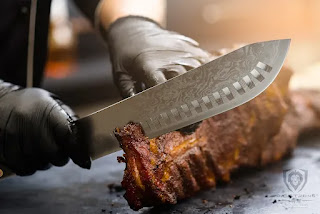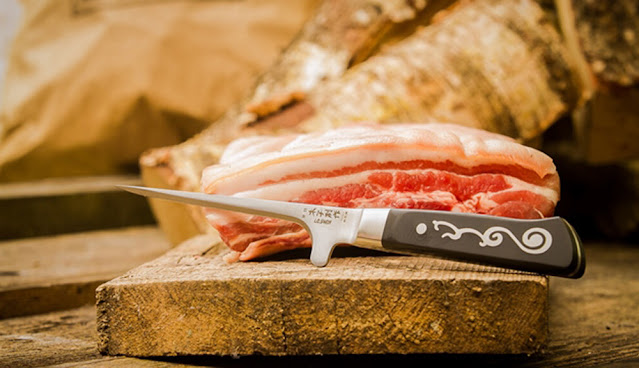Slice and Dice: A Comprehensive Guide to Choosing the Perfect Butcher Knife
In the realm of culinary craftsmanship, a butcher knife is an indispensable tool, wielding the power to transform raw ingredients into culinary masterpieces. Whether you're a seasoned chef or an aspiring home cook, choosing the perfect butcher knife can make a significant difference in your kitchen endeavors. In this blog post, let's embark on a journey to explore the intricacies of butcher knives, helping you find the blade that suits your cutting needs.
Understanding the Anatomy of a Butcher Knife:
Before delving into the selection process, it's essential to familiarize yourself with the anatomy of a butcher knife. These knives typically feature a broad, heavy blade with a slight curve, allowing for efficient slicing, dicing, and chopping. The spine of the blade is robust, making it suitable for heavier tasks.
Selecting the Right Blade Material:
Butcher knives come in various materials, each offering unique advantages. Stainless steel is popular for its corrosion resistance and easy maintenance. High-carbon steel provides exceptional sharpness and edge retention but may require more care to prevent rust. Consider the material that aligns with your preferences and maintenance routine.
Choose the Right Blade Length:
The ideal blade length depends on your specific cutting tasks and comfort level. Butcher knives typically range from 6 to 14 inches. A shorter blade may be more maneuverable, while a longer blade excels at cutting through larger pieces of meat. Consider the balance between precision and versatility when choosing the length.
Handle Comfort and Grip:
The handle of a butcher knife plays a crucial role in your cutting experience. Look for a knife with an ergonomic handle that provides a comfortable grip. Materials like wood, plastic, or rubberized materials offer varying degrees of grip and comfort. Test a few options to find the handle that feels right in your hand.
Full Tang Construction:
For durability and balance, opt for a butcher knife with a full tang. This means that the blade extends through the handle, providing strength and stability. Full tang knives are less prone to breaking or bending during heavy-duty cutting tasks.
Maintenance and Sharpening:
Regular maintenance and sharpening are essential for keeping your butcher knife in top condition. Consider knives with blades that are easy to sharpen and maintain. Some blades may require more frequent sharpening but offer superior sharpness, while others may hold an edge longer but require less frequent sharpening.
Budget Considerations:
Butcher knives come in a wide range of price points. While premium knives offer exceptional craftsmanship and materials, there are also budget-friendly options that deliver reliable performance. Set a budget that aligns with your preferences and cooking style, ensuring that you get the best value for your investment.
Conclusion:
A butcher knife is more than just a kitchen tool; it's an extension of your culinary skills. By understanding the key features and considerations, you can choose a butcher knife that complements your cutting style and enhances your kitchen adventures. Whether you're preparing a Sunday roast or crafting a gourmet meal, the right butcher knife is your trusted ally in the art of slicing and dicing.




Comments
Post a Comment